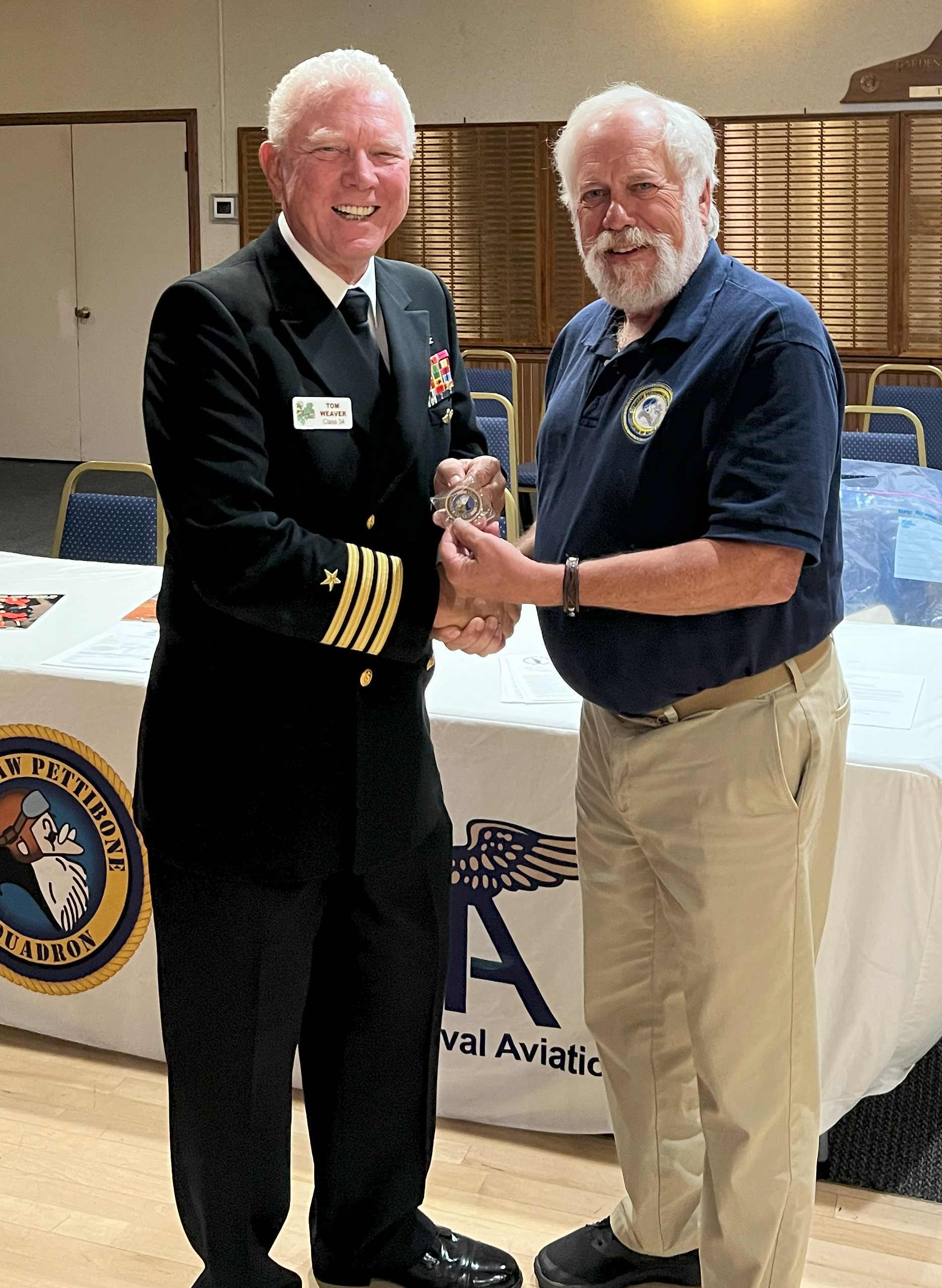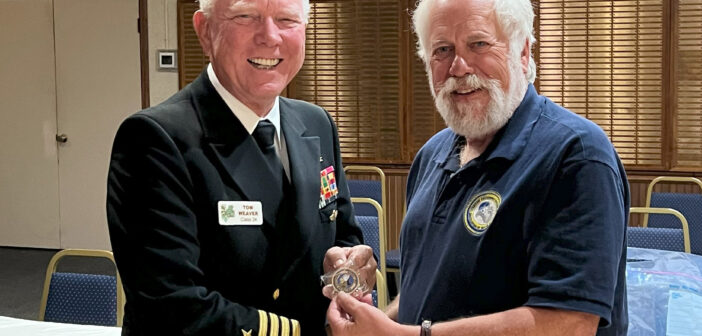 Our speaker at the October, Grampaw Pettibone Squadron meeting was CAPT Thomas D. Weaver, USN (Ret.) who briefed us on the selection and training of U.S. Navy SEAL team members. Tom served 30 years before he retired as a Special Warfare Officer with eight commands within the special warfare community. He started his presentation with a discussion of the antecedents of SEAL teams (which were authorized in 1962). They were the Scouts and Raiders (1942-1947) and Underwater Demolition Teams (1943-1982).
Our speaker at the October, Grampaw Pettibone Squadron meeting was CAPT Thomas D. Weaver, USN (Ret.) who briefed us on the selection and training of U.S. Navy SEAL team members. Tom served 30 years before he retired as a Special Warfare Officer with eight commands within the special warfare community. He started his presentation with a discussion of the antecedents of SEAL teams (which were authorized in 1962). They were the Scouts and Raiders (1942-1947) and Underwater Demolition Teams (1943-1982).
Selection of SEAL candidates is rigorous. Pre-screening sets the minimums to get orders to training. The published criteria (minimums) are: 10 pull-ups, 50 push-ups in under two minutes, 1.5 mile run in under 10 ½ minutes, 50 sit-ups in two minutes and a 500-meter swim in 12.5 minutes! Of course, there are short breaks between each activity. Completing with minimum scores will not guarantee an offer of Special Operator rating contract. The average contract results are better than the minimums according to Tom who suggested that goals should be 25+ pull-ups, 100 push-ups, under 10 minutes for the run, 100 sit-ups in two minutes, 500 meters in eight minutes and complete the run in under nine minutes. Once the applicant makes it through the physical qualifications, there is a one-hour psychological evaluation. There is also a test for claustrophobia! After passing all of these tests the candidate receives orders for training to qualify as a SEAL.
Training takes place, for the most part, in Coronado, CA and includes classroom and physical activities. The first phase is called “Basic Underwater Demolition/SEAL Training” which is referred to as ”BUD/S”. There are approximately six classes per year. Each class starts with 150 enlisted and 25 commissioned officers. The goal is to graduate 25-30 of the 175 after about 24 weeks of training which includes five weeks of “conditioning”, five and one-half days of “Hell Week”, nine weeks of diving and nine weeks of land warfare.
The majority of the attrition occurs in the first six weeks. Tom gave us a breakdown of Hell Week: Sleep deprivation and cold-water swims in the middle of the night are the norm for the entire period; Thursday night is the “worst” and is sobering to the uninitiated. Trainees get about four to six hours of sleep during Hell Week.
The next phase of training lasts about six months and is called “SEAL Qualification Training”, referred to as “SQT Training”. From this point forward in the harassment and cold-water swims in training cease. This is now professional training, starting with special patrolling tactics and equipment pack out for each type of mission. Topics include battlefield medicine, communications, land navigation, marksmanship, demolition, combat swimming, tactical parachuting, etc.
There is advanced training after SQT. It is all training for the jobs that SEAL team members perform. Tom pointed out that the makeup of SEAL platoons has changed over time. The fire teams have gone from seven men to ten, with the addition of dog handlers, drone operators and linguists.
Training takes about two years, start to finish. There are eight SEAL teams and the assignment is determined by the Navy. Nobody is directly assigned to the highly classified SEAL Team Six. One must serve at least a year with another team before being asked to join.
The Navy determines the assignment according to the needs of the team. There are six or seven platoons in each team and a platoon is normally assigned to specific geographical areas.




